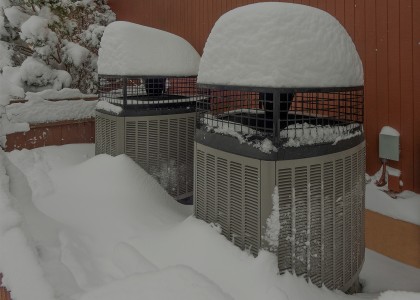A dizzying array of cutting-edge energy efficiency technology is available in today’s marketplace. Though many smart products are affordable, they remain vastly underutilized. The efficiency field seems to have a persistent and stubborn adoption gap. To explore the issue, ACEEE’s Summer Study on Energy Efficiency in Buildings will hold a tech-focused plenary in addition to dozens of related sessions.
Register by August 1 to avoid late fees
As Summer Study’s 2018 co-chair, I helped organize and will moderate the tech plenary on Monday, August 13th, entitled “Making Efficiency Easy and Enticing — Does Technology Help or Hurt?” To give you a taste of our discussion, I posed a few questions to the plenary’s speakers: Emma Bassein, VP of Strategic Initiatives at Carbon Lighthouse; Fatima Crerar, Director of Social Impact and Sustainability at ecobee; Colin Sng, Director of Customer Success at First Fuel; and Yeye Zhang, head of West Region Energy Partnerships at Google.
Here are excerpts of our conversation:
Which energy efficiency technologies available today hold the most promise for saving energy?
Emma: In general, we see that controls, both in lighting and HVAC, hold the most promise. The real challenge is getting them to work well and together. There are also some really interesting products coming out pushing the boundaries of equipment efficiency, from frictionless compressors to advanced materials impacting everything from the efficiency of heat exchangers to building facades.
Yeye: Smart thermostats!!!
What do you see as the biggest barriers to their mass adoption?
Emma: The biggest barrier is getting the attention of the right decision makers. There is a compelling case that these energy efficiency improvements on their own have much more significant financial implications when you look at how an increase in operating income impacts the value of a commercial building. Some technologies, such as lighting with integrated sensors that can create virtual lighting zones, have the opportunity for ancillary benefits such as not needing to re-wire lighting circuits when the use of the space changes. This could have huge upside on the tenant improvement process.
Colin: Achieving mass adoption of EE technologies is multi-faceted. I think a big part is about better understanding the mindset of the consumers or end-customers we're trying to reach. If we use the Technology Adoption Curve as a guide, mass adoption would be the stage at which one should be appealing to the practical, risk-minimization mindset of the (early) majority rather than early adopters and innovators. A few of the main challenges in reaching this "majority" group are: (1) being able to relate benefits in the context of personal or business goals, (2) improving the ease of deciding on and implementing the technology, and (3) helping them make sense of the cost of implementing a technology or, more specifically, the return on investment.
Yeye: Lack of awareness and the if-it-ain't-broke-don't-fix-it mindset. Replacing a (dumb) thermostat that's still functioning, even if it's not saving energy or money takes a lot of consideration. And smart thermostats are a considered purchase.
How can we address those barriers and make efficiency easy and enticing?
Emma: In short: we need to take a data-driven approach to clean energy and efficiency. At Carbon Lighthouse, we employ data to completely change the way that we talk about the economic value of energy savings. We look at how it really impacts the individual commercial building’s financial metrics and think beyond just one building to strategies that are scalable to portfolios. On the technical side… we take a totally technology agnostic approach and use a vast dataset to customize solutions to specific buildings in an automated way and then make sure those solutions are implemented correctly and last in the long term by both managing the installation on the ground and then trending the results over time to detect anomalies.
Colin: Being able to personalize the outreach, the messaging, and the offer goes a long way toward building awareness and credibility with each customer…To achieve mass adoption, personalization needs to happen at scale. And that is where analytics and automation come in. Customer-specific insights driven by real-time analytics enable the effective use of personalization at each step of the consumer's/end-customer's journey, and not just in recommending a specific technology.
Yeye: 1. Focus on the customer, remove friction from the experience, and meet customers where they are: in retail, online, with trades or pros, and through utility programs. For example, validated instant rebates, both in brick and mortar stores and online, have significantly influenced customers to purchase these new technologies. 2. Expand access to energy savings technologies to income-qualified customers, multi-residential properties, small and medium businesses, and other harder-to-reach sectors. 3. Collaborate with brands to delight the customer! It's not just a smart thermostat, it's the thoughtful home.
Are the “non-energy” features of technologies the key to increasing their adoption?
Emma: The tough part about non-energy features is that they each appeal to different players in the building ecosystem. If you are selling financial benefits to the owner, they will not be directly affected by improved indoor air quality in that building, nor with how much easier it might be to reconfigure a space with virtual lighting zones. If the primary customer for a given service or technology is property management, a different set of priorities might surface that highlights some of the other benefits, and yet a different set of priorities for a facility chief. For example, they might not care about the cost savings at all, but do care about reduced comfort complaints or equipment downtime.
Yeye: Absolutely. Convenience is queen!
From a technology perspective, what can we do to make efficiency easy and enticing? Can technology be used effectively to ease consumer choices and corporate decision-making? Or is technology in fact getting in the way? Are the “non-energy” features of technologies the key to increasing their adoption?
We will explore these questions and more in a spirited free-flowing discussion in this plenary session. We hope you will attend and join the discussion!
Paul Mathew is a staff scientist and department head of Whole Building Systems at Lawrence Berkeley National Laboratory




